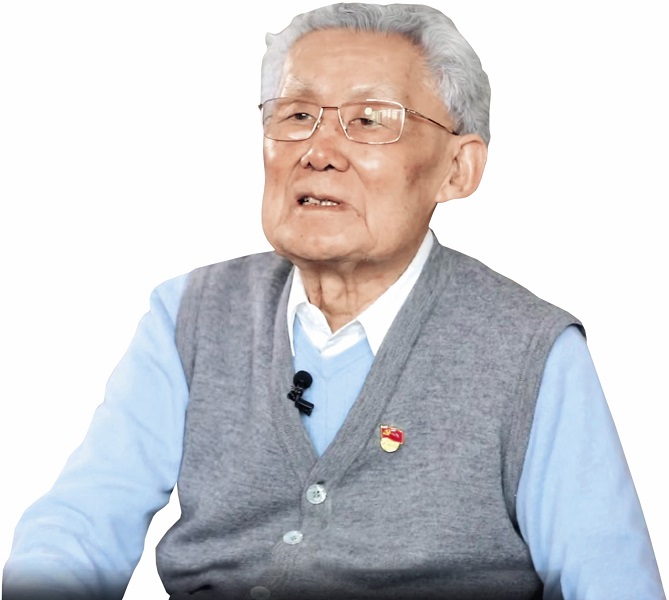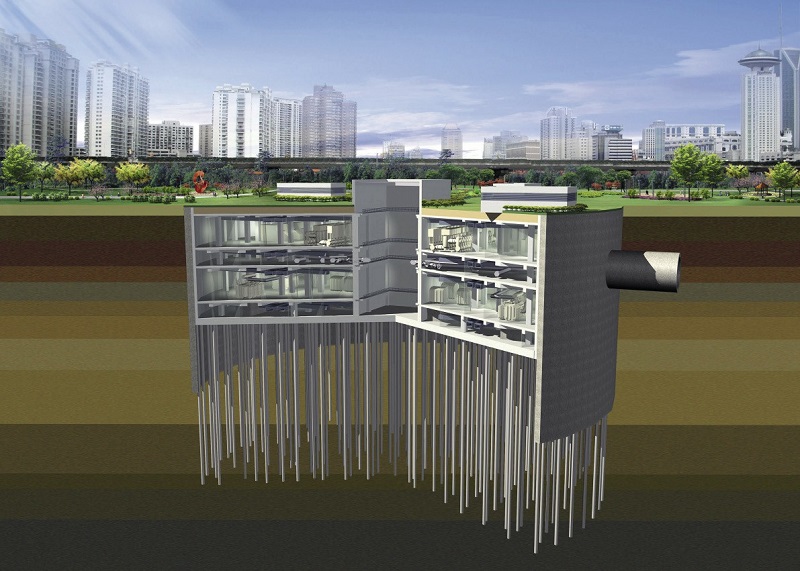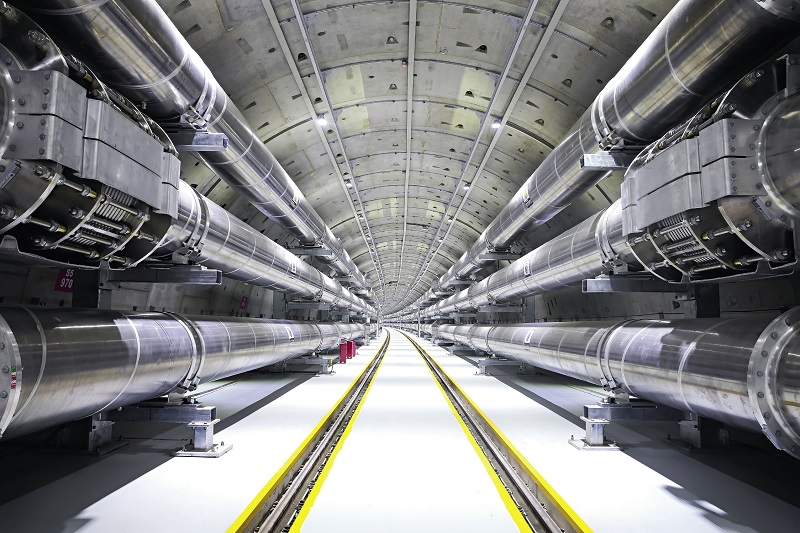The inheritance of old traditions and the innovation of new technologies have given the institute a solid foothold in the field of nuclear power design.
In 1951, 20-year-old Xu Zhongqing traveled three days from Wenzhou to Hangzhou, Zhejiang Province, to take part in China’s National College Entrance Examination. He passed the test, and was admitted into Zhejiang University where he majored in electrical power engineering. After graduating in 1955, Xu was assigned to work at the East China Electric Power Design Institute (the Institute) in Shanghai. With long exploration and arduous efforts, Xu and his coworkers built China’s first nuclear power plant.

Xu Zhongqing and his coworkers designed China’s first nuclear power plant.
China’s First Nuclear Power Plant
Back in 1970, Shanghai filed an application to the central authorities for the construction of a nuclear power plant. The plan was approved by then Premier Zhou Enlai. “In the long run, to solve the electricity problem in Shanghai and east China, we should rely on nuclear power,” said Zhou.
The new nuclear power plant was named Qinshan. The Institute was chosen to design the conventional turbine island and decide on a location of the nuclear power plant.
Xu recalled that he and his colleagues faced two major difficulties in the construction. First, financial difficulties at the national level affected the project’s progress and cooperation; and second, their knowledge of nuclear power technology was quite limited.
Xu, together with some 20 colleagues, were selected by the Institute to take a half-year training program on basic principles of nuclear engineering at Shanghai Jiaotong University. They also did research on relevant protocols and documents about nuclear power plant designs in foreign countries.
“We started from scratch. We consulted documents and nuclear experts, and learned from foreign companies,” Xu recalled. Soon he and his colleagues became the pioneers in the Institute, who mastered the knowledge of designing conventional island and basic theories of nuclear power.
In 1978, the Third Plenary Session of the 11th Central Committee of the Communist Party of China lifted the curtain on China’s reform and opening-up. As one of the pioneering cities in reform and opening-up, Shanghai ushered in a golden era of development.
Back then, the Institute was working on the power plant project of Baoshan Iron & Steel Plant, a leading steel maker in Shanghai. Outstanding engineers were sent by the Institute to Japan for a business trip to the design company affiliated with Tokyo Electric Power Company.
“It was my first visit abroad,” Xu recalled. “We first went to Beijing, and everyone borrowed a suit and a suitcase from our institute’s logistics department.” In the era when necessities were in short supply, even proper dress was a luxury to Xu and his colleagues. But what really blew his mind was what he saw abroad. “The priority of industrial design in China at the time, including the design of power plants, was to satisfy production needs. But what I saw during my visit to Japan was that Japanese designs of power plants fueled by coal, gas or nuclear power were delicate, exquisite, and beautiful,” Xu said.
Xu realized the importance of changing ideas. “[After the trip], we knew we had to control pollution to the environment,” Xu said. He and his colleagues applied all that they learned to the design of the power plant for Baosteel, from its layout to its appearance, color and measures for environmental control. In the end, a garden-like power plant came into being.
Xu later incorporated the design idea he learned in Japan into the guiding design protocol of the Institute. The idea also inspired the design of the Qinshan nuclear power plant. “Although the conventional island does not involve nuclear power, the safety requirements were the same, and there can be no error, even the slightest,” said Xu.
To achieve this, he thoroughly consulted foreign nuclear power construction documents and kept himself informed of the latest advanced technologies and ideas of other countries in the field. According to him, coal and nuclear power are still the main sources of energy that can continuously provide large amounts of electricity.
Through the joint efforts of the Institute’s first generation of nuclear power experts represented by Zhou Chuanjia, Xu Zhongqing, Li Hua, Shou Shijun and Shi Jiali, the Qinshan nuclear power plant was commissioned in December 1991.

East China Electric Power Design Institute ensures the power support for the Shanghai World Expo in 2010 by undertaking the overall design of a 500-kilovolt underground substation.
Innovating the Brand
The inheritance and continuation of old traditions and the innovation of new technologies have given the Institute a solid foothold in the field of nuclear power design.
On January 30, 2021, the world’s first nuclear power unit using Hualong One, a domestically-designed third-generation nuclear reactor, was connected to the power grid and started to generate electricity in Fuqing, southeast China’s Fujian Province. On March 18, the Chinese nuclear reactor began to power its first overseas electricity generation unit – the unit 2 of the Karachi Nuclear Power Plant in Pakistan. Hualong One nuclear reactor, the design of which the Institute contributed to, enabled China to emerge as one of the world’s leading countries in nuclear power technology.
“The successful design of Hualong One was a result of long-time accumulation as well as continuous innovation. Our achievements in R&D and technological progress accumulated over the past decade since the design of the phase I of Qinshan nuclear power plant have been reflected in the design of Hualong One,” said Zhu Zhiming, chief engineer of unit 5 and 6 project of Fuqing nuclear power plant.
Behind the success of the project is the unsung dedication and perseverance of the workers of the Institute. “The success gives us more confidence and strength, allowing us to have greater courage to face challenges in the future,” said Zhang Jie, chief design engineer of the unit 5 and 6 project.

The Sutong GIL Comprehensive Pipe Corridor is a part of the Huainan-Nanjing-Shanghai 1000 KV AC ultra-high voltage transmission project.
Boosting Local Economy
Shanghai has been at the forefront of China’s opening-up. Being inclusive and pursuing excellence have always been key elements in the Institute’s continuous innovation.
To ensure the power support for the Shanghai World Expo in 2010, the Institute undertook the overall design of the 500-kilovolt underground substation, a key supporting project for the Expo. “It was China’s first 500-kilovolt underground substation. The design team’s first challenge was how to design a stable enough foundation pit in Shanghai where the soil is typically soft,” recalled Le Dangjiu, chief design engineer of the substation.
After repeated tests, the design team finally adopted a reverse construction method, with which the structure and volume were much smaller than that with normal construction methods. As a result, the construction period and level of difficulty were reduced, and the impact on the surroundings and the structure was also maintained to a minimum level.
The design team put the novel idea of an all-underground substation into action, and effectively combined the design of the substation with the large-scale urban green space “Jing’an Sculpture Park” built on the ground area. “This is in line with the theme of ‘Better City, Better Life’ of the 2010 Shanghai World Expo,” Le Dangjiu said.
During the same year, the ±800 kilovolt Xiangjiaba-Shanghai ultra-high voltage (UHV) direct current (DC) transmission project was put into operation. The link was the world’s first UHVDC superhighway. In 2019, the Sutong gas insulated line pipeline gallery project was completed and put into operation. A superhighway power supply network was completed for Shanghai, continuously transmitting clean electric energy into the city and laying a foundation of energy for its economic take-off. “We are willing to make new contributions to the city’s economic boom,” Le said.